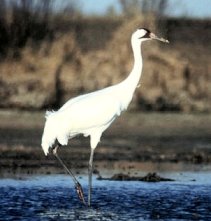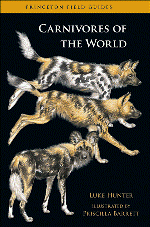Wild Tracks
On behalf of the world's wild species
Tag Archives: crane migration
Whooper Alert
Growing up in northern Alberta, I distinctly remember flocks of whooping cranes passing over our house. It was a normal as the sun setting. Little did we know what the future held for these huge, whooping birds.

Whooping Crane
The whooping crane was designated as an Endangered Species in Canada in 1978. Low population numbers, loss of habitat, slow reproductive potential and questions about the stability of their winter range combined to drastically reduce the population. From a record low of less than 20 birds, protection and management programs have slowly increased the crane population.
At the end of March and early April, whooping cranes who have spent the winter in Texas begin migrating north to their breeding grounds in western Canada. Twice each year the birds make the 4,023 km (2,500 mi) journey up and down North America.
The only natural nesting habitat for these huge birds is Wood Buffalo National Park, a 16,895 km² wetland complex in the boreal forests of northern Alberta and southwestern Northwest Territories.
This past winter has been a particularly hard one for the whooping cranes at Aransas National Wildlife Reserve in Texas. Wildlife managers are worried that some of the cranes may be too weak and malnourished to successfully make their return to Canada this season.
Drought has affected the flock that spends each winter on the Texas Gulf Coast. The birds have had trouble finding food because low water levels have decreased the number of blue crabs, which make up 85 percent of their diet. Reserve staff have set up 13 deer feeders with corn, prohibited crab fishing in and around the refuge, and conducted controlled burns to produce new green plants.
Tom Stehn, U.S. Fish and Wildlife Service whooping crane coordinator, said some of the birds, which are part of the only naturally occurring population of whooping cranes in the world, could die during the return trip to Canada’s Wood Buffalo National Park because they are so weak and malnourished. Most of the birds will begin the trip in early April.
The flock had a record number of 270 when it arrived last fall. Six adults and 15 chicks had died as of March 15, leaving the flock at 249.
Returning whoopers have already been spotted on their way north in Nebraska this month, and bird watchers along the Central Flyway are on full alert for more sightings.
If you’re in their migration range keep an eye out for these huge white birds. North America’s largest wading bird, they stand up to 4.9 ft (1.5 m) tall, and weigh 13-15 lb (6-7 kg). In flight, their black wing tips are visible, the neck is extended and their long legs extend beyond their tail. Their wingspan measures 6.5 ft (2 m).

Whooping Crane in flight
If you see a Whooping Crane, please report your sighting to the Whooping Crane Conservation Association
Photo credits: Brian Johns, Environment Canada

You must be logged in to post a comment.